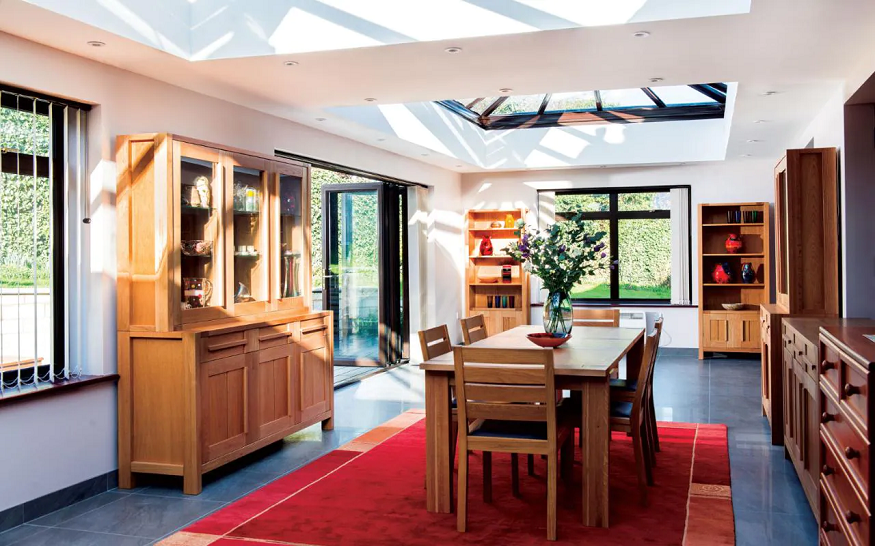If your house has a garden or a large terrace, it may be possible to build a veranda . This encroaches on your garden/terrace, but offers the great benefit of enlarging your home. This is particularly appreciable in temperate and/or rainy zones where the use of outdoor spaces is often uncomfortable for half the year.
In addition, thanks to its structure of large bay windows and doors (hinged or sliding), during the summer the veranda can open and become a transitional space between the garden and the dining room.
From an administrative point of view, the veranda offers a particular interest: if the footprint is less than twenty square meters, its construction requires only a simple declaration of construction . In PLU/POS areas this rule even counts up to 40 square meters.
Beyond these dimensions, you will need to apply for a building permit. Be careful, however, of the total footprint of your house: if the veranda extension makes it exceed the threshold of 150 square meters, you will have to ask for the intervention of an architect! Do not hesitate to seek advice from a real estate professional .
A well-insulated room for all seasons
The materials used to build verandas are generally insulating materials, combined with double glazing. The most popular of these materials is PVC, for its low cost and soft appearance. However, PVC verandas do not suit all building styles and are rather modest in size. Indeed, PVC being a weak material, a good thickness is needed for the load-bearing beams.
A wooden veranda is a much more aesthetic and natural solution. Wood also offers insulating properties, but it requires much more maintenance than other materials. An interesting idea is to combine wood with PVC to take advantage of the qualities of both materials.
The other popular option is the aluminum veranda with a bioclimatic pergola. This material is stronger than others and makes it possible to build large verandas that can easily support the weight and provide a large living area, without losing aesthetic quality. On the other hand, an aluminum veranda is more expensive and can quickly scratch.
As a last option, we can opt for a wrought iron veranda . The latter, very popular in the 19th century, is ideal for those wishing to create winter gardens.
Thus adorned, your veranda will ensure a mild temperature in winter. In summer, this indoor temperature can be regulated in several ways:
Hide the top of the veranda
Use wide doors and leave them wide open
Install a passive ventilation system (air vents in the chassis, top and bottom to create an air current)
Install a mechanical ventilation system , the most efficient but consuming electricity.
A bath of light to keep morale high
Among the advantages of a veranda, we will also note the bath of light. The veranda is made up of large bay windows, although other options exist. As a result, it is the brightest room in the house. However, we need enough daylight to maintain a good mood, regulate our circadian rhythm (and improve the quality of our sleep), and even to reduce the risk of myopia in our children.
During the ‘bad’ half of the year we tend to stay in places that are too dark due to bad weather conditions, which has adverse effects. By using the veranda as a living room, with effective thermal insulation (also called “thermal bridge”), we can benefit from daylight at any time of the day: to relax, read a book, receive friends, have our meals…
The gain in financial value: One of the key advantages of a conservatory
The last advantage of a veranda follows from all the previous advantages. By adding a veranda to a house, the financial value of the house increases accordingly. Building a good, well-insulated and ventilated veranda can turn out to be a very profitable real estate operation!

